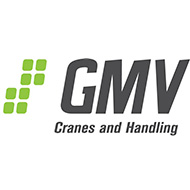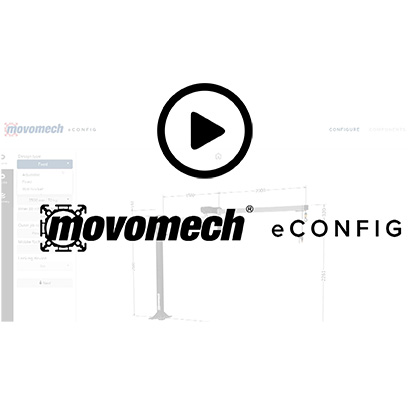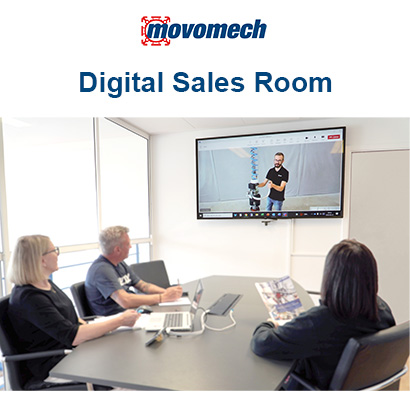
News and information
How to inspect the trolleys in your crane system
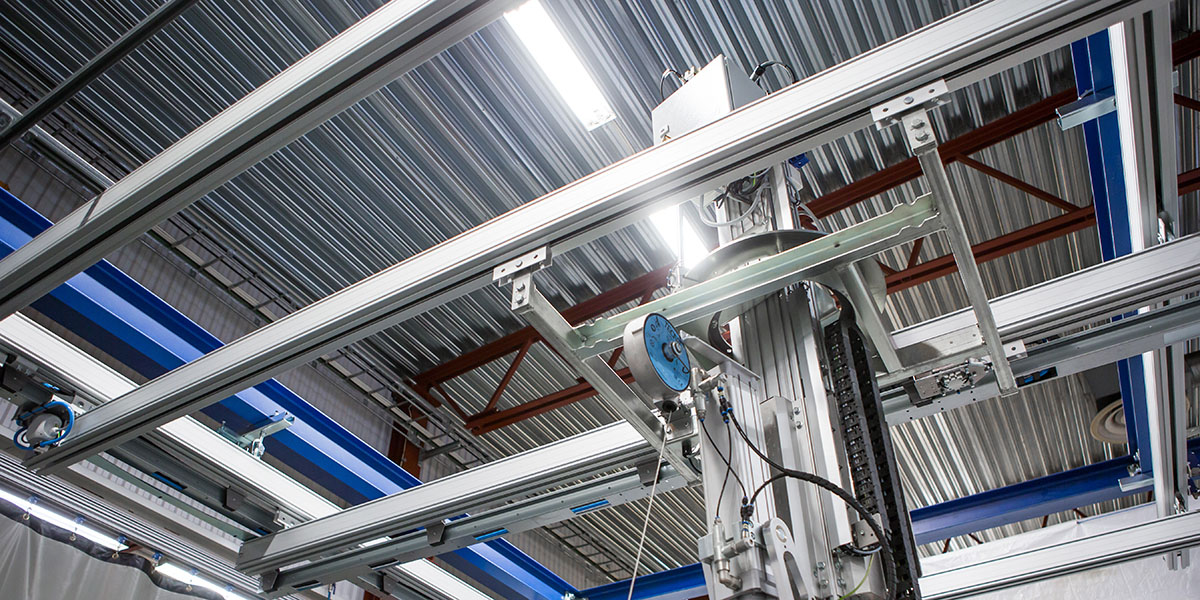
The load-bearing trolley is one of the most important components of a crane system.
Regular inspection to assess the status of trolleys and influencing factors in the workstation’s environment is important, both in order to optimise the functionality of the crane system and to ensure an optimal situation ergonomically for operators using assisted lifting and manual handling.
Movomech recommends the following procedure for checking the status and performance of trolleys.
1. Listen and feel
Listen for faint noises, scraping or squeaking. Trolleys should run silently and their passage should feel even and smooth along the full length of the rail system.
2. Compare theoretical performance with actual outcome
Calculate the theoretical starting force for the system. Generally, for manually moving loads, Movomech’s Mechrail™ crane system requires a starting force equivalent to between 1 and 1.5% of the total weight of the load recalculated to pressure and traction, including the weight of rail components, lifting equipment and any tool. The moving force required to keep the load in motion is less than 1%.
When using media supply, such as cable trolleys, cable carrier chains or similar, approximately 10-20 N should be added to this theoretical value.
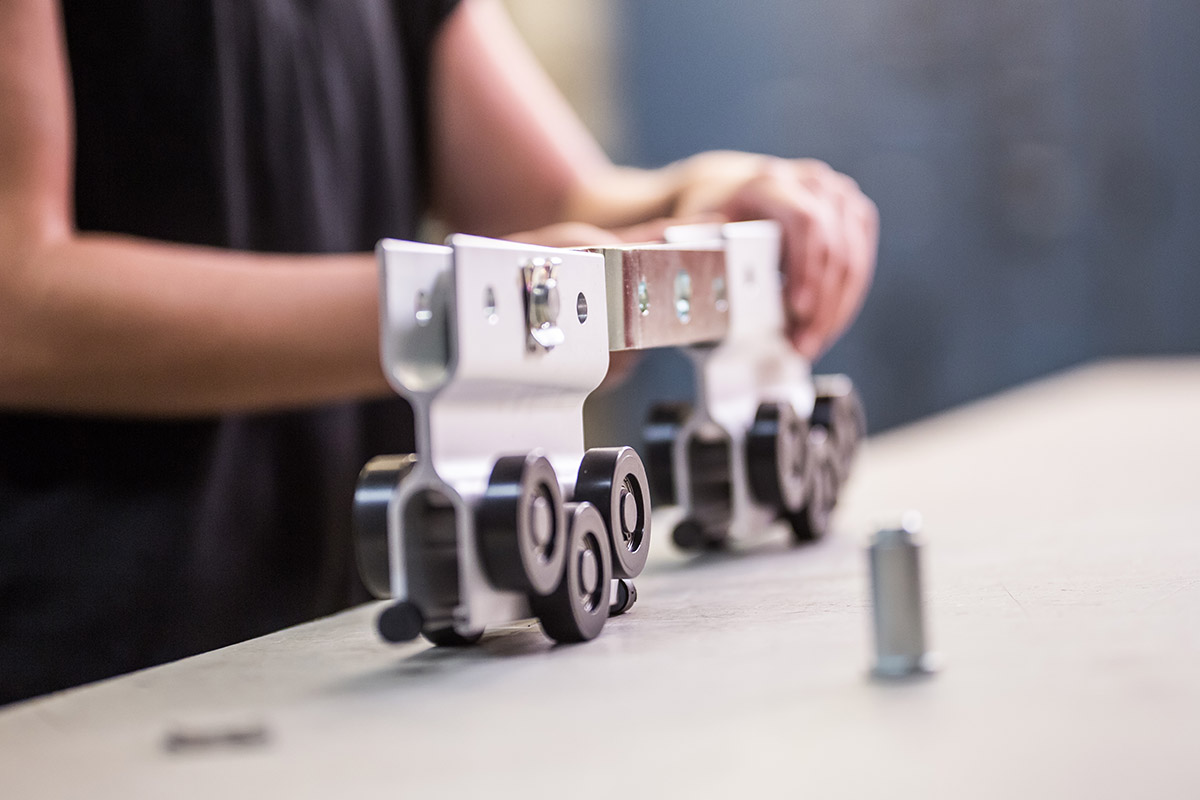
Inspecting the status of trolleys is an important part of planned maintenance for a light crane system.
Project-specific load situations may affect the starting and moving forces required, for example where a telescoping crane is mounted with a slight reclination in order to automatically go to return mode with the aid of self-rolling with the lifting equipment unaffected.
Once the theoretical value is derived, the actual outcome can be measured for comparison and preliminary diagnosis.
Begin by pulling the load at normal handling height using a dynamometer to determine the size of the starting and moving forces* required to transport the load. This test is normally conducted five times at a speed equivalent to the normal pace of work, with the median value selected as the outcome.
*When transporting for less than 5 seconds, the moving force will not normally be tested.
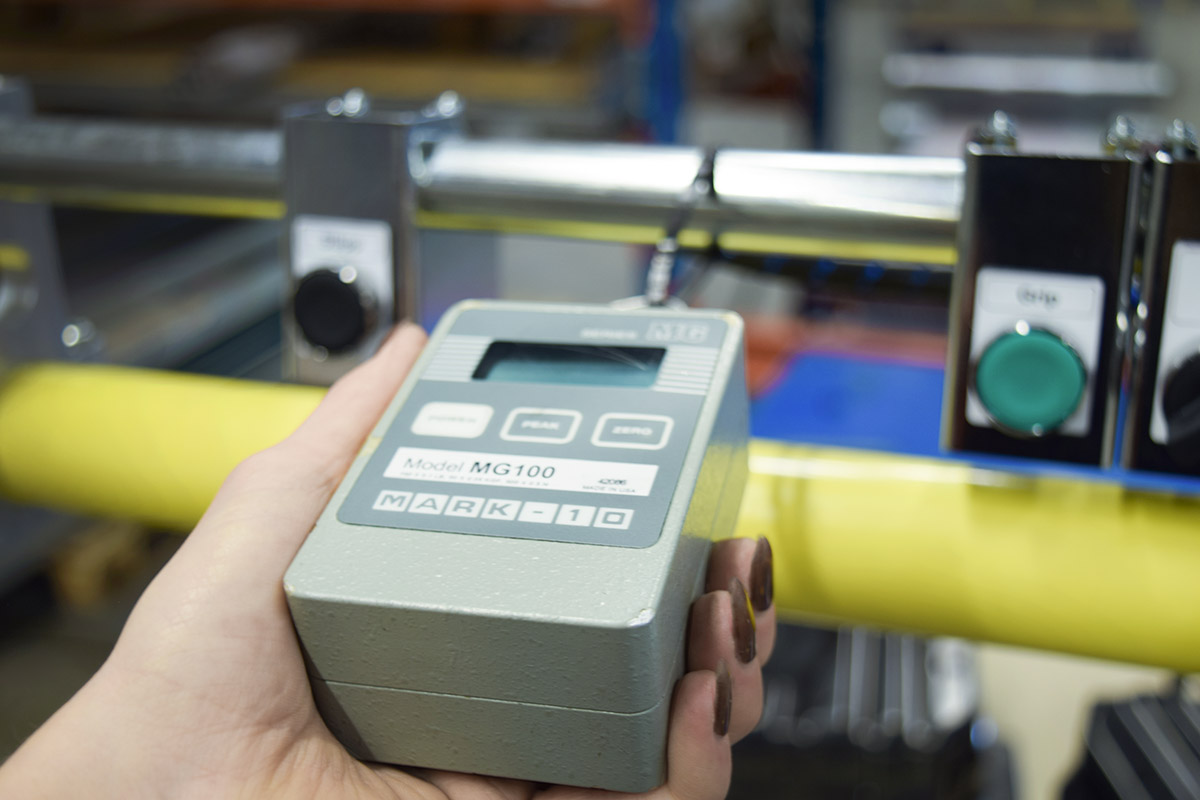
Pull the load at normal handling height with a dynamometer.
If the values obtained deviate clearly from the calculated theoretical forces, this can be taken as an indication that performance has deteriorated and that the trolley’s status should be more thoroughly inspected, see points 3 and 4.
3. Inspect the wheel contact surfaces in the profiles
Inspect the profile surfaces on which the trolley runs and clean if necessary. The surface should be clean and dry. Sooner or later, dirty and greasy running surfaces will always have a negative impact of the crane system’s performance. Use a clean, dry piece of cloth.
Although grease or oil may temporarily loosen the trolley in a jammed section where external effects have caused the deterioration of a profile, this is merely disguising the problem and will cause occasional increased rolling resistance by attracting dirt and debris to the runners and trolley wheels. Grease and oil applied to profiles will also drop onto personnel and products.
4. Inspect the wheels
Dismantle the trolley from the profile for inspection. Look for damage, debris or wear to bearings. If any of these are apparent, the trolley will need to be replaced. The wheel should not wobble by more than 0.1 mm. It should rotate freely and evenly without problem.
Although inspecting the status of trolleys is an important part of planned maintenance for a light crane system, it is not sufficient in itself. How well a system functions is also affected by factors such as the precision of installation, the condition of tracks, profiles and joints, the status of accessories and additional components, and so on.
For further information regarding how best to inspect and maintain your crane system to ensure optimal performance, please contact Movomech’s Service Department or your local Movomech dealer.

 Svenska
Svenska
 Deutsch
Deutsch
 Français
Français


